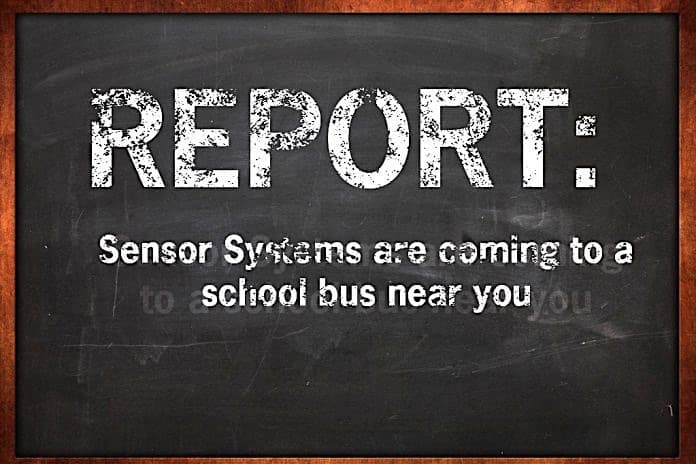After completing a pilot program testing two different child-detection sensor systems for school buses, officials with the Iowa Department of Education are going to allow — but not require — school districts to implement this technology. Last week the DOE released its final report on the yearlong pilot.
Max Christensen, the department’s school transportation consultant, told STN that sensor-driven student detection systems officially received the stamp of approval after four districts tested two different systems during a period of eight to 13 months.
“Due to the complexity of the pilot, we ran it over a year. I wanted to run it part of one year and into the next to see how the sensors would react during the summer, when buses aren’t being used. It had no effect on them,” said Christensen. “While the testing bore out some concerns and problems, the technology and the idea behind it seem fairly sound.”
In the pilot, the Janesville, Spencer, Union and Waverly-Shellrock school districts tested the Student Detection System by Rostra as well as one by Safe Zone Inc. Both work similarly and both offer alarms and lights to notify the driver that a child may be in danger, he explained.
“As to differences, the Safe Zone uses Doppler radar in the sensing units while the Rostra uses another form of sensing. Additionally, the Safe Zone has about half the number of sensors as the Rostra,” Christensen stated in the report.
All four districts had the Safe Zone systems, yet Janesville and Union also used the Rostra. Transportation officials at each district submitted evaluations describing their experiences with installation, maintaining and operating the systems.
The Maintenance and Inspection Advisory Council within the DOE reviewed their evaluations and ultimately decided to not adopt strict technological criteria for the systems, but rather to allow the use of “sensor-driven and/or video based student detection systems.” Even though the pilot did not include any video-based systems, officials said the theory behind them is the same as those tested.
Christensen added that this stance will open up the field to new ideas in developing more advanced designs — not just for sensors but also for video camera technology.
Now, he plans to send out an official letter to school districts to tell them the DOE completed this pilot project and determined that sensor systems would be permitted to offer added protection to children in the “danger zone,” the 10 to 15 foot area immediately around the school bus.
The report states that these systems would benefit schools by providing an extra set of “eyes” all around the outside of the bus to assist the bus driver in watching for students walking or standing too close to the bus. Each year a half-dozen schoolchildren are killed in this zone.
“With that in mind, it could help to save some young lives,” Christensen noted in the report.
While the School Transportation Office will recommend that this type of technology be allowed, he said adoption of this allowable option on school buses in Iowa must still follow the approved rules-making process through the State School Board and Legislature.
The Impetus for the Project
The Janesville Consolidated School District was the first to install child detection sensor systems on its buses last spring, in response to the tragic death of Justin Bradfield in October 2011. The fifth grader was fatally struck by his school bus when he bent down to retrieve an item he’d dropped after disembarking and fell out of the driver’s view.
Fellow student Emily Halbach then hatched a school project with the idea that motion sensors around school buses could prevent similar tragedies in the future. Her project grew into the Smile BIG Foundation, which was founded by Bradfield’s parents.
Bob Hanson, Janesville’s director of transportation, said the foundation would provide funding for the sensor systems, which he considers “very promising.”
“I have heard the state has approved the Child Detection System manufactured by Safe Zone Inc. for use. Not once has this system failed to activate an alarm during our pre-trip inspections,” Hanson told STN.
Christensen noted that most of the problems during the pilot revolved around sensor alignment and sensor placement. The sensor systems never actually malfunctioned when a student was around, but sometimes they picked up when a car was going by on the other side of the bus or even rain if it was really pouring. This “sensor sensitivity” often activated the alarms unnecessarily.
“While some potential concerns involving installation, customer service, sensor sensitivity/adjustment, cost and maintenance were found, the systems generally performed as designed. Proper and professional installation and sensor settings seem to be the key to making the systems successful,” he concluded in the report.
















